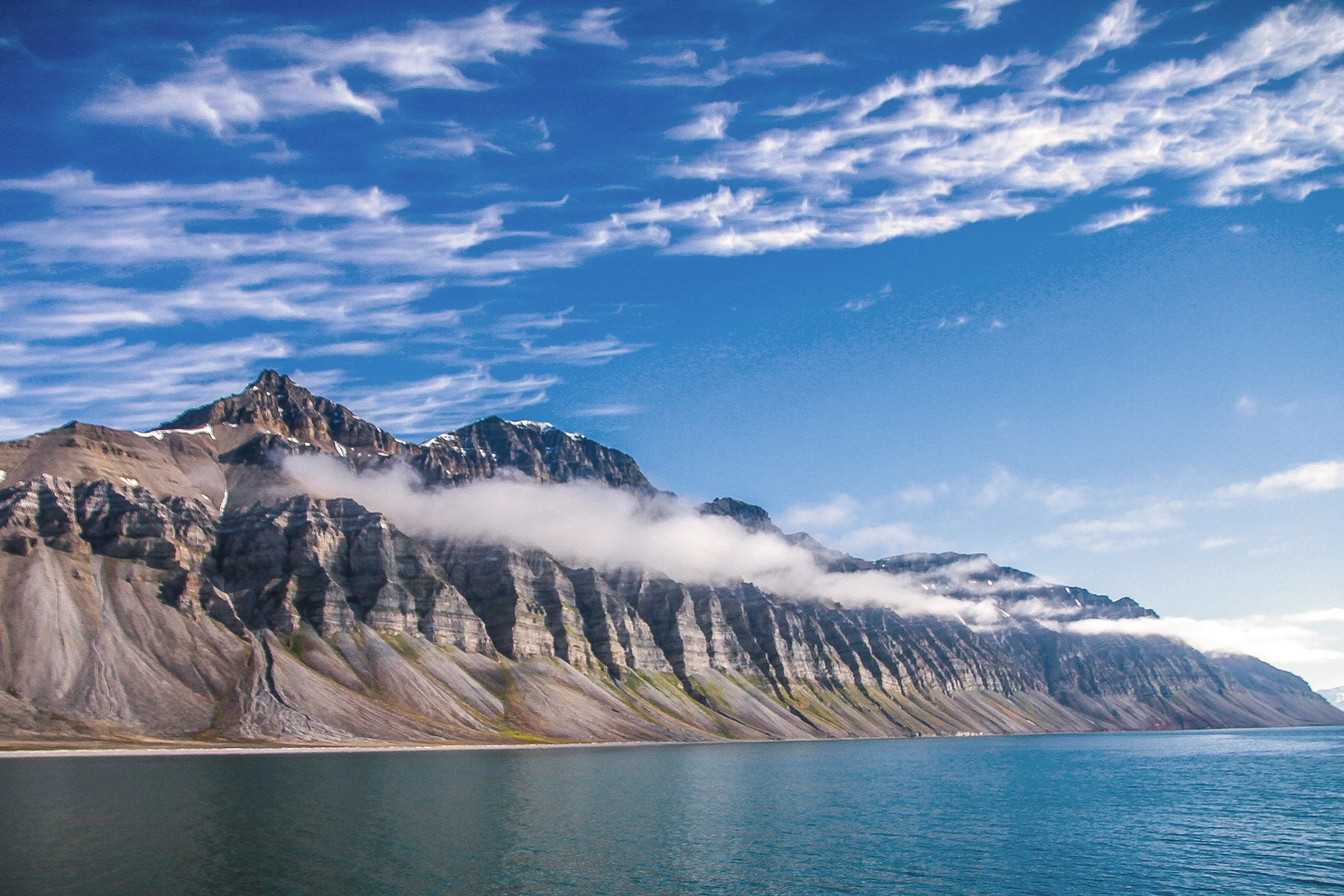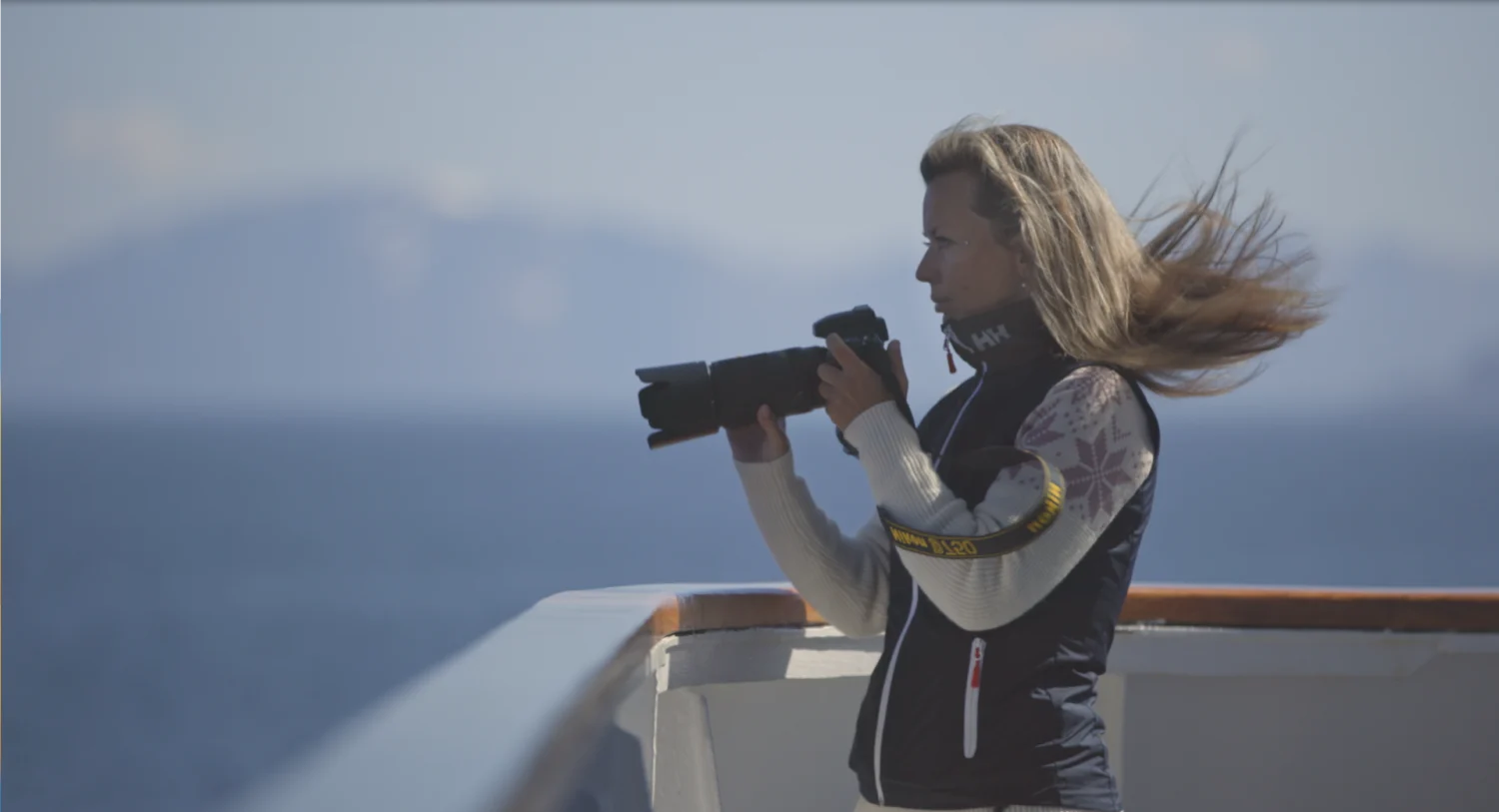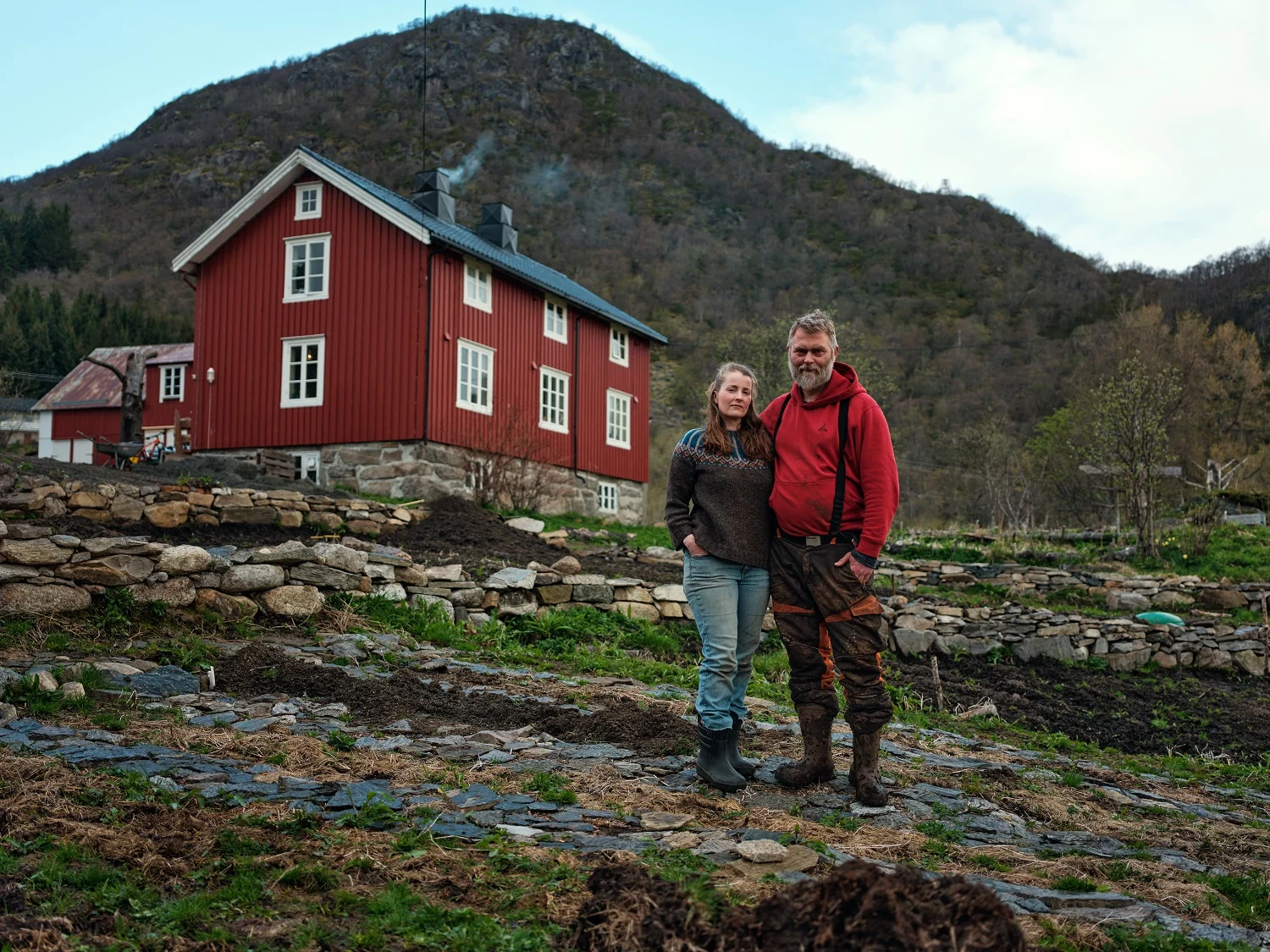Dear Coast, from Catherine, a landscape artist
When professional landscape artist Catherine Harvey Jefferson set sail on The Svalbard Line, she took her paints with her. This is her story of capturing the extraordinary light of the Midnight Sun.

“It was very demanding, that light,” says Catherine as she thinks back to her voyage on The Svalbard Line last summer. “I couldn't sleep. I felt that I was going through a sort of mania, trying to capture as much of what I was seeing, trying to catch some of that energy. It's such a powerful landscape, erupting out of the sea. And it is absolutely mind-blowing in its shapes.”
A qualified skipper who has been sailing her whole life, Catherine has read widely about the explorers who first sailed the northernmost latitudes. “I thought about doing it in my own tiny boat but it would take me about six months just to get up there!” So doing the journey with Hurtigruten was like a dream come true. It also meant she could focus entirely on her art, leaving MS Trollfjord’s experienced Captain to take care of the navigation.
From the sketches she made while standing at her small table on the deck of MS Trollfjord last summer, Catherine has created a series of paintings of Norway’s coast. It’s fascinating to see the gradual changes in colour and mood depicted in oils and watercolours as she sailed north, from the lively greens of Åndalsnes and the white energy of the Arctic Circle to the surprisingly clay tones of Svalbard and the glacial blues of 79 degrees north.


As she speaks to us in early June, almost a year after her Norway voyage, the light in Catherine’s Cornish studio is warm and yellow. But the pictures on its walls, inspired by her time on The Svalbard Line, shine with the qualities of a very different kind of light: that of Norway’s Midnight Sun.
To people from more southerly latitudes, the qualities of this extraordinary light may be surprising. Rather than the warm honey hues usually associated with the sunset golden hour, the light of the Midnight Sun can be clear and bright.
“Waking up, there was a clarity to that light, which was like nothing else I'd seen,” says Catherine. “I’ve spent all my life sailing, but this was something else. A high-pressure system was sitting over the top of Norway while we were there, which created a glassy, expectant sense to the landscape. At one point, as we came around Lofoten to Træna, everything went silvery. It felt like we left one world and entered another. It was like entering a dream.”
As a landscape artist, when Catherine looks at a view, she sees more than green hills, grey cliffs, a blue sea. She sees an array of colours and shapes. The Midnight Sun added even more colours to Catherine’s usual palette as she travelled towards Svalbard.
“The further north I went, the bluer and bluer it got. It’s something you only really notice if you're making paintings. I noticed it in the palette. Prussian Blue creates intense shadows, so I often use that, but some of the oil colours that I chose to use were metallic, because they give off a sheen to show that bouncing light. And I used a lot of pink because, at what would have been dusk, the colour in the sky changes and you get lots of pinks, but the sun never actually dips below the horizon.”
Catherine isn’t the only artist to be inspired by the unique light of the Midnight Sun. Since returning home, she’s researched how other artists have described that light and has discovered some interesting parallels.
“I looked at Anna Boberg, a Swedish artist who worked in Norway at the turn of the 20th century, wearing a massive fur coat with her painting things spread out in front of her. I looked at Munch. He’s best known for The Scream but he made fantastic landscape paintings too. It seems we’re using the same language, of pinky lines of light that come out of the sky. You can see it in one of my paintings of Træna. It’s interesting that other artists have seen those same things.”
Catherine’s way of talking about her art as language is revealing. Paint is her way of “describing” and “translating” her experience of the landscape. She talks about the need to practice “being” in a place, of looking closely at where she is. Then, she needs some distance, both in time and place, as she goes through the process of painting a series of pictures based on the sketches she made onboard. Each is more abstract than the last as she “gets used to the language and starts thinking more and more about the residual effect of that landscape on your brain.” It’s like a conversation between coast, paintbrush, and feeling.
But it wasn’t only the coast’s picturesque landscapes that moved Catherine.
“Going into the Trollfjord was a powerful experience for me. I was completely knocked out by various things, one being the delicacy with which the female skipper took the ship into that fjord. I'm a yachtswoman myself so obviously I have different training, but I admired how she did a ballet-like turn about three times in the end of the Trollfjord and then took the boat gently back out again... There were white-tailed sea eagles overhead and the fjord is so narrow that you feel so close to the edges. As we went into the narrowest gap, it was almost like a birth. I can see why the Trollfjord is an important place for mythology.”
The relatively small size of MS Trollfjord, and all of our ships, means that we can sail safely into the smaller deep, Prussian Blue fjords. “You get to see much more than you would on a bigger ship,” notes Catherine.
Sailing on an electric boat to a glacier in Svalbard was another highlight. “That glacial turquoise is something you can't describe in paint,” she says, describing it instead as an auditory experience.
Once they were close enough to the glacier edge and the engine switched off, “you can hear that ice creaking and crackling; it talks all the time, constantly moving as it breaks away from the edge of the earth. Then it breaks down very, very slowly, and the shapes that the ice makes when it melts are fantastical,” she says. “Because it was foggy when we went up towards the glacier, we got a sense of being in a quiet theatre. You pick up tiny sounds from far away. It distorts your sense of space and size.”
The decision to sail our coastline with Hurtigruten was important too, both for Catherine and for many of the other guests she chatted to on board.
“Every aspect of where we were taken on that trip moved people in the most extraordinary way. Many of the people I spoke to had wished to do this for a long time. It's not a lightweight cruise where you jump on board and go in the swimming pool. It feels more serious, and the people that I talked to seemed to have an intellectual connection to making that adventure.”
“I think a lot of that has to do with the fact that Hurtigruten was the first shipping line to open up the coast. It transformed that landscape. Imagine how utterly isolated those places were before Hurtigruten started making connections and introduced a route to enable a postal service, trade, and news of everything happening up and down that coast.”


At times, Catherine talks of the coast as if she feels a part of it, rather than simply an observer of it. And it’s true. As an artist, she says, she likes to truly “arrive” and really feel where she is – a process she finds easier to do at the “more human speed” of travelling by boat – before she starts to translate that feeling into a picture.
“That's how I see my paintings. If you knew the place well enough, you could recognise it in the painting, but one of my aims is always to try and make you have a deeper understanding of where that place is, how it has affected me, and how it could affect you.”
After hearing about Catherine’s experience on The Svalbard Line, we hope you will experiment with seeing Norway’s coast through a painter’s eye. Like Catherine, perhaps you will feel even more deeply affected by and connected to our beautiful home on your next visit.
Discover The Svalbard Line
Experience The Land of the Midnight Sun for yourself on a voyage on our Signature route, The Svalbard Line.
Up to 16 days, with shorter north and south options available
From Bergen to Svalbard and back, with several hours in up to 14 ports
All-inclusive food and drink from our award-winning Norway’s Coastal Kitchen
Sail on newly refurbished MS Trollfjord, our flagship for Signature voyages

More stories from the coast

Dear Coast, from Jennifer
For Jennifer Drescher, the urge to see the Northern Lights on what might have been her last trip in life led her to sail The Coastal Express. This is her love letter to the Norwegian coast.

Dear Coast, from Myklevik Gård
When Åshild and Gisle saw Myklevik Gård on the Lofoten Islands, they realised that what they thought was their plan for life, was not the plan at all. This is their story.

Dear Coast, from the flower farmer of Hjørundfjord
Per-Gunnar Holmberg has dedicated his life to flowers. Bouquets of his flowers bring people extra joy when Norway celebrates its national day on 17 May.